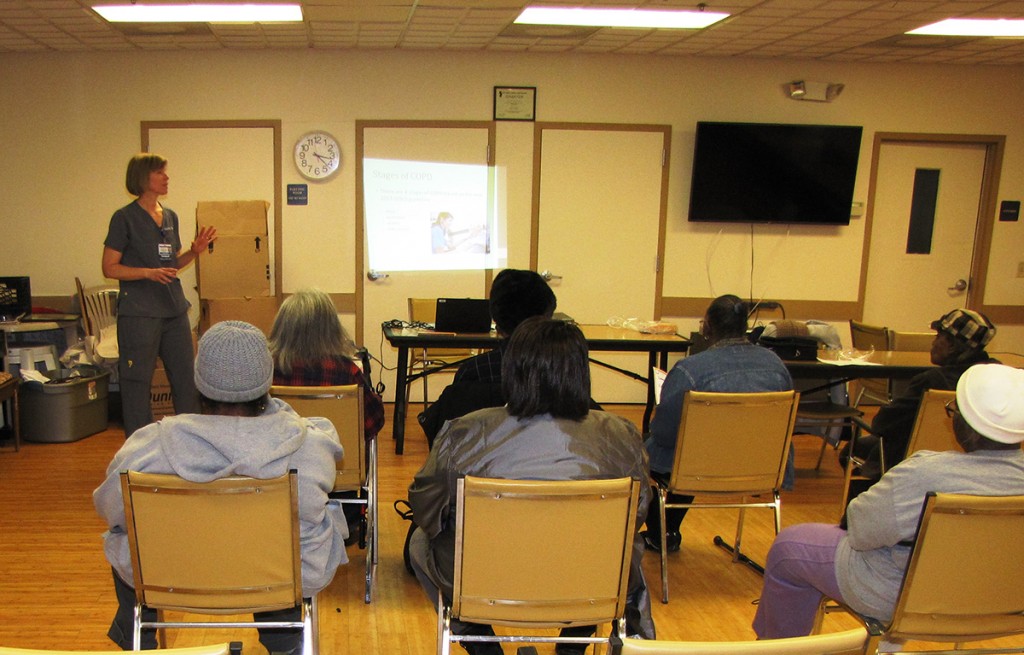Frequently Asked Questions

Q: What is COPD?
A: COPD, which stands for chronic obstructive pulmonary disease, is a progressive disease that makes breathing difficult and gets worse over time.
Q: What are the symptoms of COPD?
A: Symptoms can include coughing up large amounts of mucus, wheezing, chest tightness or shortness of breath. The condition may develop slowly over time and can limit a person’s ability to perform basic activities such as walking, cooking or taking care of one’s self.
Q: What causes COPD?
A: Smoking is a leading cause of COPD. Other factors that may contribute are long-term exposure to fumes, dust, air pollution or other lung irritants.
Q: How common is COPD?
A: COPD is the third leading cause of death in the United States, according to the National Heart, Lung, and Blood Institute. Most people who have COPD have both chronic bronchitis and emphysema as well.
Q: Is COPD a disease that can be passed from one person to another?
A: No, COPD isn’t a disease that can be transmitted between people. However, there is currently no known cure.
Q: What can I do to manage my COPD?
A: If you smoke, quit. Exercise regularly but first ask your doctor for recommended physical activities. Eat a healthy and well-balanced diet. Get enough sleep each night. Take any medications as directed by your doctor. The damage done to your lungs and airways is permanent, but there are things that you can do to manage your COPD.
Q: Where can I learn more about COPD?
A: For more information, check out the following resources:
American Lung Association
800-LUNGUSA (800-586-4872)
www.lung.org
National Heart, Lung, and Blood Institute
301-592-8573
www.nhlbi.nih.gov
American Association for Respiratory Care (AARC)
972-243-2272
www.aarc.org
Global Initiative for Chronic Obstructive Lung Disease
www.copd.org
Sources: Saint Barnabas Medical Center and the National Heart, Lung, and Blood Institute website




